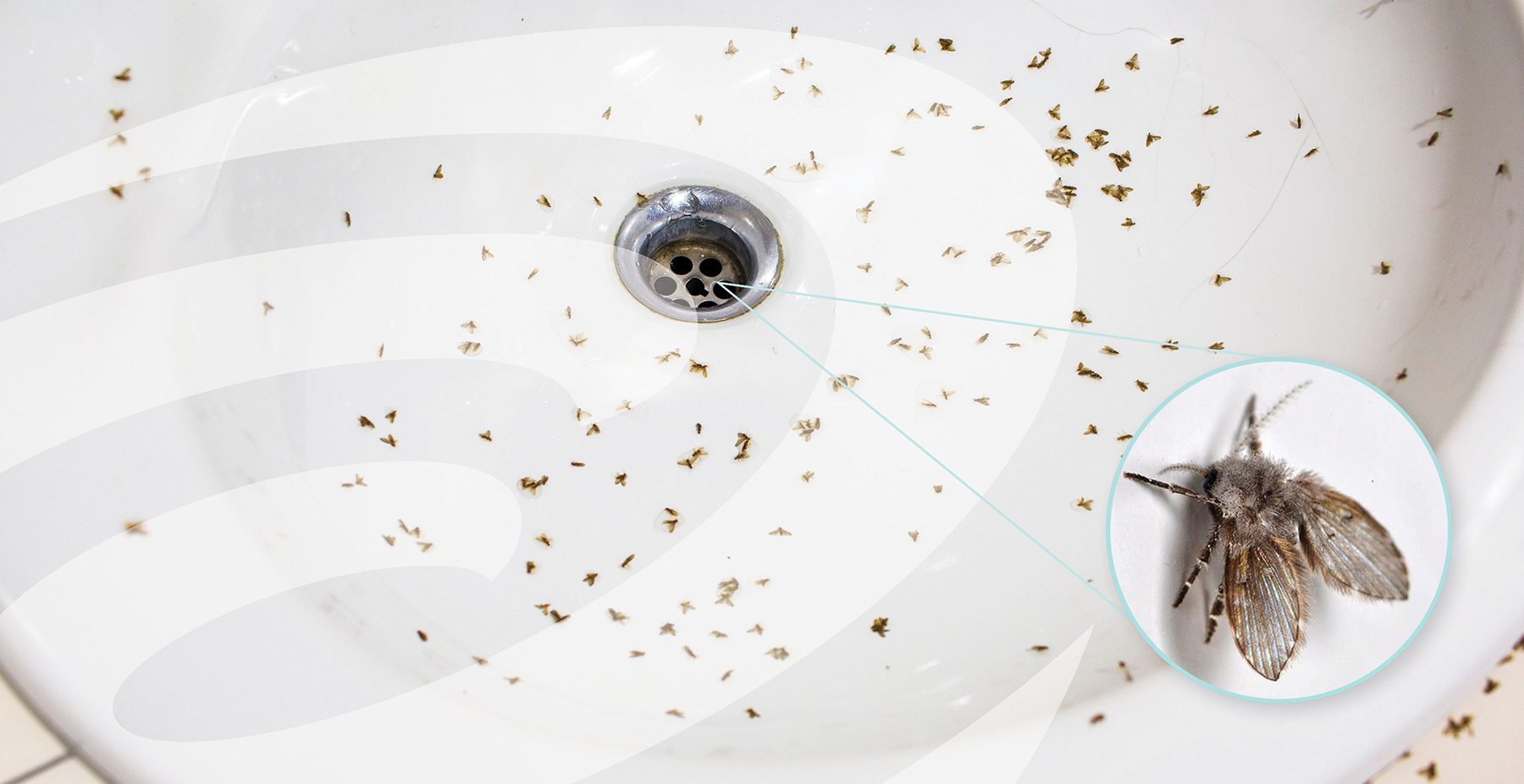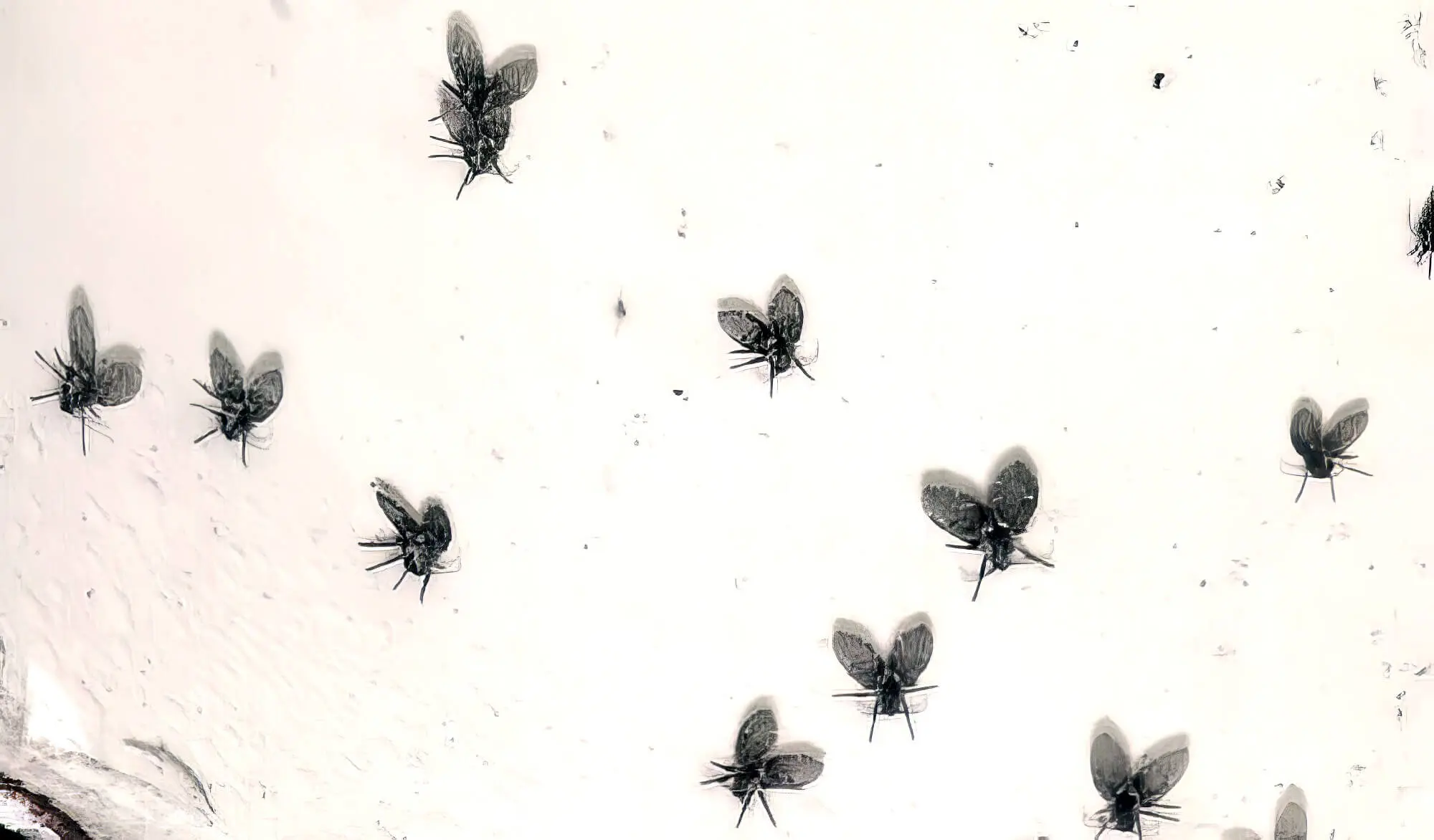Understanding Bathroom Fly Behavior
:max_bytes(150000):strip_icc()/Getting-rid-of-drain-flies-2656670-V1-1340ca9ec3a743cb95a366862a9961c1.png)
The sight of flies buzzing around your bathroom can be a real nuisance, but understanding their behavior is key to effectively getting rid of them. Knowing their life cycle, preferred breeding grounds, and what attracts them can help you take targeted action.
Bathroom Fly Life Cycle, Home remedies for bathroom flies
Flies undergo a complete metamorphosis, meaning they have four distinct stages of development: egg, larva, pupa, and adult.
- Eggs: Female flies lay their eggs in moist, decaying organic matter, which can be found in bathrooms. These eggs are tiny and white, often laid in clusters.
- Larva: The eggs hatch into larvae, commonly known as maggots. Maggots are white, legless, and worm-like, feeding on the decaying matter.
- Pupa: After feeding, the larva enters the pupal stage, forming a hard, brown casing. This stage is usually hidden within the breeding ground.
- Adult: The adult fly emerges from the pupa, ready to mate and lay its own eggs, continuing the cycle.
Preferred Breeding Grounds
Bathroom flies thrive in environments with moisture and decaying organic matter. Common breeding grounds in bathrooms include:
- Drainpipes: The build-up of hair, soap scum, and other organic debris in drainpipes provides ideal conditions for fly breeding.
- Garbage bins: Uncovered garbage bins attract flies and provide a perfect breeding ground for their eggs.
- Toilet bowls: Flies can lay their eggs in dirty toilet bowls, especially if there’s standing water or organic matter present.
- Damp towels: Damp towels left in the bathroom can attract flies and provide a suitable environment for egg laying.
Factors Attracting Bathroom Flies
Bathroom flies are attracted to several factors, including:
- Moisture: Flies need moisture to survive and reproduce. Bathrooms, with their high humidity, provide a perfect environment for them.
- Food sources: Flies are attracted to food, especially decaying organic matter. Food scraps, spills, and even toothpaste can attract them.
- Waste: Flies are drawn to waste products, including feces and urine. Keeping your bathroom clean and free of waste is crucial.
Common Bathroom Flies
The most common types of flies found in bathrooms include:
- House flies: House flies are the most common type of fly, known for their grey and black striped bodies. They are attracted to a wide range of food sources and can quickly become a nuisance.
- Fruit flies: Fruit flies are small, brown flies with red eyes. They are particularly attracted to fermenting fruits and vegetables, which can be found in bathrooms.
- Drain flies: Drain flies, also known as moth flies, are small, dark-colored flies with fuzzy wings. They are often found near drains and are attracted to the organic matter that accumulates there.
Natural Repellents and Deterrents: Home Remedies For Bathroom Flies

Flies are pesky creatures that can quickly invade your bathroom, making it an unpleasant space. Thankfully, you can use natural methods to repel and deter these unwanted guests. Utilizing the power of nature, you can create a fly-free bathroom environment without resorting to harsh chemicals.
Essential Oils for Fly Repellent
Essential oils are a potent and natural way to deter flies. Their strong scents can confuse and repel these insects, creating a fly-free zone in your bathroom.
- Peppermint Oil: This oil has a strong, pungent aroma that flies find unpleasant. Its active compound, menthol, acts as a natural repellent. Apply a few drops of peppermint oil to cotton balls or a diffuser to deter flies.
- Lavender Oil: Known for its calming properties, lavender oil also has a strong scent that flies dislike. Its floral fragrance can effectively deter flies. Apply a few drops of lavender oil to cotton balls or a diffuser, or add it to your cleaning solutions for a pleasant scent.
- Eucalyptus Oil: With its refreshing and strong scent, eucalyptus oil is an effective fly repellent. Its active compound, eucalyptol, is known for its insect-repelling properties. Apply a few drops of eucalyptus oil to cotton balls or a diffuser to deter flies.
- Tea Tree Oil: This oil has a strong, medicinal scent that flies find unpleasant. Its antiseptic and antifungal properties make it a good choice for repelling flies. Apply a few drops of tea tree oil to cotton balls or a diffuser to deter flies.
- Citronella Oil: Citronella oil is a popular natural insect repellent, and it is effective against flies. Its strong, citrusy scent is known to deter flies. Apply a few drops of citronella oil to cotton balls or a diffuser, or use citronella candles to create a fly-repelling atmosphere.
DIY Natural Fly Traps
You can create simple and effective fly traps using common household ingredients. These traps lure flies into a sticky solution, trapping them and preventing them from spreading germs.
- Apple Cider Vinegar Trap: Apple cider vinegar is a natural attractant for flies. Combine equal parts apple cider vinegar and dish soap in a jar or bowl. Add a few drops of essential oil for a more potent scent. Place the trap near areas where flies are common.
- Fruit Fly Trap: Fruit flies are attracted to ripe or fermenting fruit. Place a small piece of overripe fruit in a jar or bowl, then add a few drops of dish soap to the bottom. The flies will be drawn to the fruit and trapped in the soapy solution.
Fly-Repelling Spray
Creating a fly-repelling spray is easy and effective. Combine essential oils known to repel flies with water and a spray bottle. This homemade solution can be used to deter flies from entering your bathroom and keep them away.
Fly-Repelling Spray Recipe:
- 1 cup water
- 10 drops peppermint oil
- 5 drops lavender oil
- 5 drops eucalyptus oil
Combine all ingredients in a spray bottle and shake well. Spray the mixture around areas where flies are common, such as windows, doors, and trash cans.
Cleaning and Sanitation Practices

Keeping your bathroom clean and sanitized is essential for preventing fly infestations. Flies are attracted to dirt, grime, and decaying organic matter, which can easily accumulate in a bathroom. By implementing a thorough cleaning routine and addressing potential breeding grounds, you can significantly reduce the chances of a fly problem.
Bathroom Cleaning Routine
A regular cleaning routine is crucial for eliminating fly breeding grounds. Here’s a comprehensive guide:
- Daily Cleaning: Wipe down the sink, countertop, and toilet seat with disinfectant wipes or a diluted bleach solution. Pay attention to areas where food particles or spills might occur.
- Weekly Cleaning: Deep clean the entire bathroom, including the shower, tub, floor, and toilet bowl. Use a disinfectant cleaner and pay special attention to corners, crevices, and drains.
- Monthly Cleaning: Clean the bathroom thoroughly, including the grout between tiles, shower head, and drain. Check for any signs of mold or mildew and address them immediately.
Preventing Fly Infestations in Specific Bathroom Areas
| Area | Tips for Prevention |
|---|---|
| Sink |
|
| Toilet |
|
| Shower |
|
Proper Waste Disposal
Proper waste disposal is crucial for deterring flies.
- Use a lidded trash can: This will prevent flies from accessing the garbage and laying eggs.
- Line the trash can with a plastic bag: This will make it easier to dispose of the garbage and prevent odors that attract flies.
- Empty the trash can regularly: Do not let garbage accumulate for long periods, as this will attract flies.
- Dispose of food scraps properly: Wrap food scraps in airtight containers or dispose of them in the garbage immediately.
